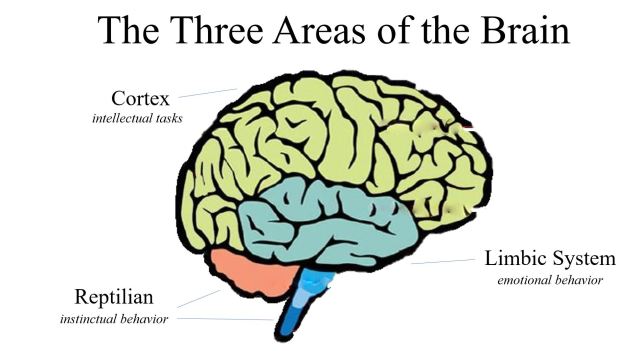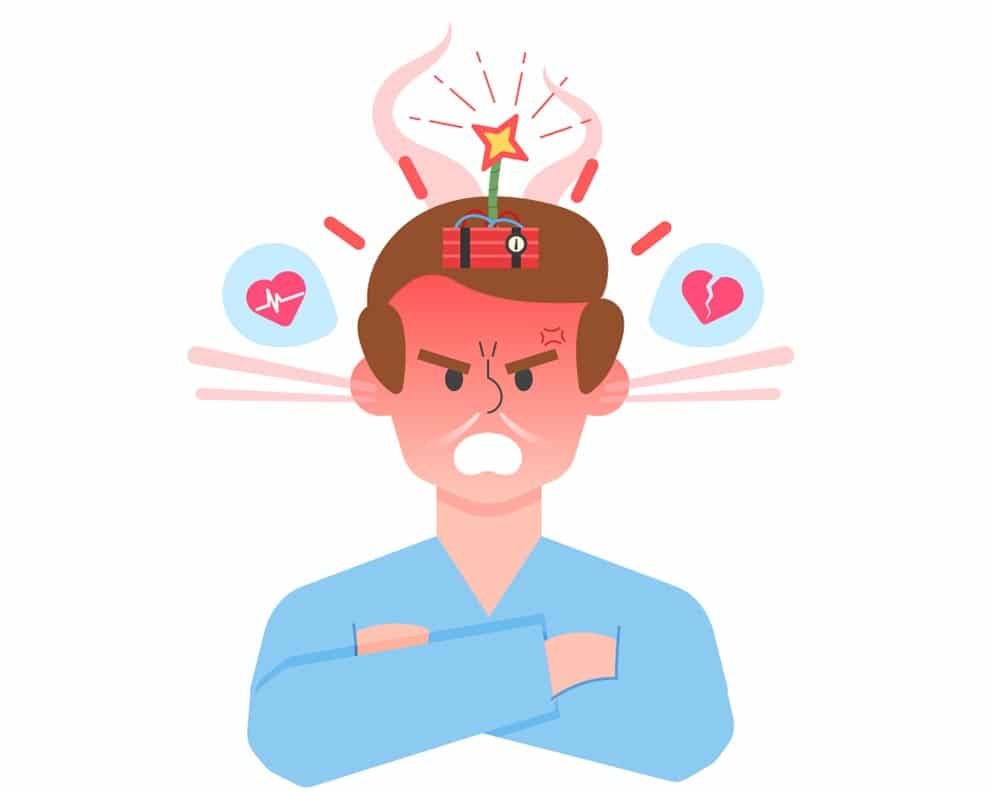We all have been in situations where our emotions have overwhelmed us. We all have done something in the heat of the moment that we regretted later. In such situations, our emotions can affect our ability to think and act rationally. We find ourselves unable to think clearly in such a state, and every passing second feels like an added burden. Why does this happen? What can we do to prevent it?
Since emotions is a topic most people find difficult to talk about with others, it is very common for people to suffer alone in a state of emotional overwhelm. And when it gets too much, we often explode – saying or doing stuff which only makes things worse, and which we end up regretting later on. We all remember the Zidane’s head butt in the 2006 Football World Cup Finals in front of 28 million TV viewers. Zidane’s aggressive reaction got him kicked out of the game, France lost the match and the World Cup, and he later ended regretting up and apologizing for what he did.
So what is it about emotions that can cause such reactions? And if everyone experiences this at some point in their lives, why is there no available literature or material which can be of help in such situations? It was to find an answer to this very question and to understand our brains better that I started a new journey (or exploration) around 2010. This journey has over the decade involved doing multiple trainings, reading hundreds of books, undergoing courses in psychology and neuroscience, and experimenting and trying out what I learned in my own personal life.

Regret After An Emotional Reaction – We All Have Been There
This article is an attempt to share what I learned about our brains and emotions in simple and easy to understand language, so that the next time any of us feel emotional overwhelm, we know what is happening inside our brain, and how to deal with it better.
The Neuroscience Behind Emotions
The primary function of our brains is to ensure our survival. When it comes to emotions and how we operate on a day to day basis, our brain can be divided mainly into 3 parts. These three parts of the brain are:-
- The Neocortex is the part of the brain where we think consciously and use reason to find our way around problems. When we make logical decisions about the pros and cons of a matter, we are using our neocortex. This is the biggest part of our brains, which is unlike other animals. In most other animals, the neocortex is either very small or completely missing. This is our conscious mind.
- The Limbic System is the part of the brain which deals with emotions, behavior, motivation, memories, and sensory information. The amygdala (which we will come to later) is a part of the limbic system. The limbic system controls the functions necessary for our survival and self-preservation – both physical and psychological. All our emotions and matters of the heart have a lot to do with our limbic system. This is our subconscious mind.
- Basal Ganglia is that part of the brain which is responsible for voluntary movements of our body which we don’t think consciously about – like our eye movements, how our internal organs work, and so on. For people with damage to their Basal Ganglia, it is difficult to control their speech and posture. When we instinctively know how to catch a ball or use a scissor, we are using our basal ganglia. It is our unconscious mind.

The Three Parts Of The Brain
The Amygdala Hijack
The Amygdala is the deepest and most critical part of the limbic system. So much of our emotions and behavior are controlled by our amygdala that I am surprised this is not part of our elementary education. It is most commonly known for dealing with fear and triggering what is called the fight or flight response. Research says that when we are emotionally overwhelmed and experience fear (to our physical or psychological safety or to our identity), our amygdala is triggered before our neocortex (the reasoning part of our brain) even knows about it. When this happens, the amygdala decides our behavior (the fight or flight response) and it is called the “Amygdala Hijack”.
This kind of immediate response triggered by the amygdala can be very useful when we see a tiger coming our way in the forest. It is the amygdala which makes us run without thinking rationally about the pros and cons of running. In those moments, you want to immediately react to ensure survival. The amygdala makes sure that happens. However, it is not only physical fear like seeing a snake or a tiger that can trigger our amygdala. Experiencing anxiety and surprise can also trigger our amygdala, even when there is no physical threat to our well being. In the world we live in today, our amygdala is mostly triggered to ensure our psychological safety rather than our physical safety.
Our brains have evolved such that our emotions can provide us with what to do without us having to think about it. During an amygdala hijack, it takes over the brain and we immediately react without consulting the thinking part of the brain. It triggers the release of hormones like adrenaline (epinephrine) and cortisol. This is what happens when we explode in anger, or when we experience physical symptoms of fear like a racing heart, sweating palms, or a shaking body even in situations with no physical threat. This survival mechanism makes us react to things before the rational brain has time to think things over.
This is one of the reasons emotions are good messengers (in the sense that they can tell us a lot) but very bad masters. Our emotions can tell us a lot about what we care about, but if we let them take over, they can short circuit the thinking part of our brain. When that happens, we react rather than respond to the situation, and the resulting action might cause us harm or regret in the future.

Suppressing our emotions can cause a lot of damage
Why Do Emotions Hijack our Behaviour and Actions?
Our brain is always in the process of survival. This survival doesn’t necessarily have to be physical in nature, it can also be emotional. For example – We can experience intense emotions (and an amygdala hijack) when our identity gets hurt. It can happen when we hear something about ourselves which we don’t want to hear or discover some truth which was hidden from us for long. When this happens, we feel fear the same way as we would on seeing a tiger.
With fear, a fight or flight response is triggered. This is why people fight and kill each other over football matches. This is why people have very strong arguments and express hate and anger over seemingly trivial matters. In all such instances, the reptilian part of our brain takes over and it tries to do its most important job – to survive. The amygdala cuts off the neocortex, which is what makes the human brain stand apart from other animals.
Needless to say, this kind of living is very effective for surviving, but not so much for thriving in the modern world. It is very difficult to have effective conversations, deal with conflict, and engage emotionally with people around us if we see everything as a threat.
The good news is that an amygdala hijack is temporary. It can feel scary and helpless, but there are ways to deal with it better. We can do so by understanding how our brain works and planning proactively. When we do so, we develop our emotional intelligence and reduce the frequency of our fight and flight responses.
Steps to Deal with an Amygdala Hijack

The Fight or Flight Response
- Prevention – The best way to deal with an amygdala hijack is to prevent it from happening. You do that by understanding how our brains and emotions work, and then developing emotional intelligence to pay attention to our emotions as they arise. It is true that emotions bring with them a temptation to react. But it is also true that there is a gap between that temptation and our action. By being more mindful of our emotions, we can learn and train ourselves to engage our neocortex before being sucked into reacting to a particular emotion. You can do that by following step 2.
- Don’t Ignore the Emotion. Label and Acknowledge It – If we name the emotions as we experience them, it can help to engage the thinking part of our brain and give us the space to choose our response. Just saying out loud that “I am feeling anger” creates a gap for you to avoid being sucked into an impulsive response. If the emotion is too overwhelming, we can at least ask for a timeout and excuse ourselves from the situation. Once we understand the emotion better, we can come back to deal with the situation in a way we can be proud of.
- Understand The Story – Every emotion has a valuable story behind it which can help us understand ourselves better. Understanding what the emotion trying to tell us can reveal our values to us, which can further guide us in deciding a conscious way to respond to it. We can do this self-examination by asking some powerful questions (why am I angry? what do I want? which of my values has been violated? what about this bothers me?) which will also help us develop emotional intelligence.
- Creating Space – Once we take a time out and see things in perspective, we can choose better thoughts. We can ask ourselves questions like — Will this issue still matter in a month? In a year? Over time this reduces the probability of having a fight or flight response, as we learn to train ourselves to interrupt the amygdala hijack before it sucks us into any damaging action.
- Connect with Our Values and Proactively Decide Our Response – Every emotional reaction can be a good opportunity for us to discover what kind of person we want to be? What are the values we believe in? What is the behavior that we must exhibit to close the gap between our actions today and the ideal way we could have behaved? Whatever actions we take, we have to live with them for the rest of our lives. Our values and purpose will help us choose our actions wisely.
Whether we manage to deal with an amygdala hijack effectively or not, we can later reflect and use the experience to understand ourselves better. We can recognize and accept our imperfections, and forgive ourselves and others when we need to. This way, we can turn emotions into positive energy and work together for a higher purpose instead of just satisfying our egos. That would be thriving at life instead of just surviving it.
Resources and References
- https://www.psychologytoday.com/files/attachments/51483/handling-the-hijack.pdf
- Goleman, D. Emotional Intelligence: Why It Can Matter More Than IQ. New York: Bantam Books, 1995.
- Nadler, R.S. Leaders’ Playbook: How to Apply Emotional IntelligenceKeys to Great Leadership, Santa Barbara: Psyccess Press, 2007
- How Only Being Able to Use Logic to Make Decisions Destroyed a Man’s Life
- What Happens During An Amygdala Hijack

Trackbacks/Pingbacks